Name INS Vishal Status Planned (design phase) Propulsion Nuclear | Commissioned 2025 (Expected) Displacement 65,000 tonnes | |
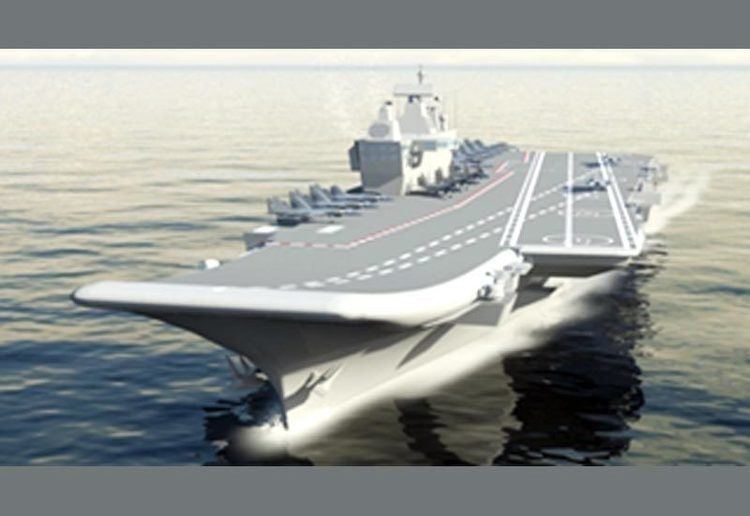 | ||
Class and type Vikrant-class aircraft carrier | ||
INS Vishal (Sanskrit: Vishal "giant") (IAC-II) is the follow-on class of aircraft carrier currently in its design phase, which will be built by Cochin Shipyard Limited for the Indian Navy. It is intended to be the first supercarrier to be built in India. The proposed design of the second carrier-class will be a new design, featuring significant changes from INS Vikrant (IAC-I), including an increase in displacement and proposals to incorporate nuclear propulsion. An EMALS CATOBAR system is also under consideration, and could be used to launch heavier aircraft like larger fighters, AEW (airborne early-warning) aircraft and Mid-Air Refueling Tankers.
Contents

Design and development

In April 2011, Admiral Nirmal Kumar Verma stated that construction of the second carrier was some years away as there were a number of higher spending priorities for the navy. The design stage of IAC-II began in 2012, and was undertaken by the navy’s Naval Design Bureau. The navy decided not to seek outside help in preparing the design concept and implementation plans, but might seek help from the Russian Design Bureau later to integrate Russian aircraft into Vishal. IAC-II is proposed to be a flat-top carrier with a displacement of 65,000 tonnes and might have a CATOBAR system, unlike the STOBAR system on IAC-I. On 13 May 2015, Defence Acquisition Council (DAC) allotted Rs.30 crore for initial construction planning process of INS Vishal.
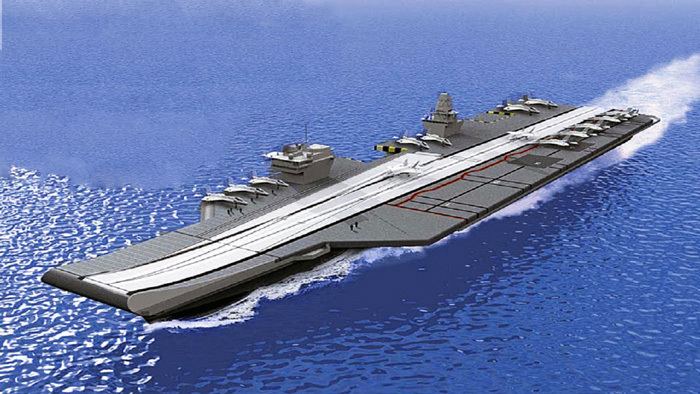
Indian Chief of Naval Staff Admiral Dhowan said: “All options are open for the second indigenous aircraft carrier. Nothing has been ruled out. It could be nuclear powered.” Indian Government signed an agreement with United States to form a Carrier Working group to identify areas of collaboration and they first met in August 2015.
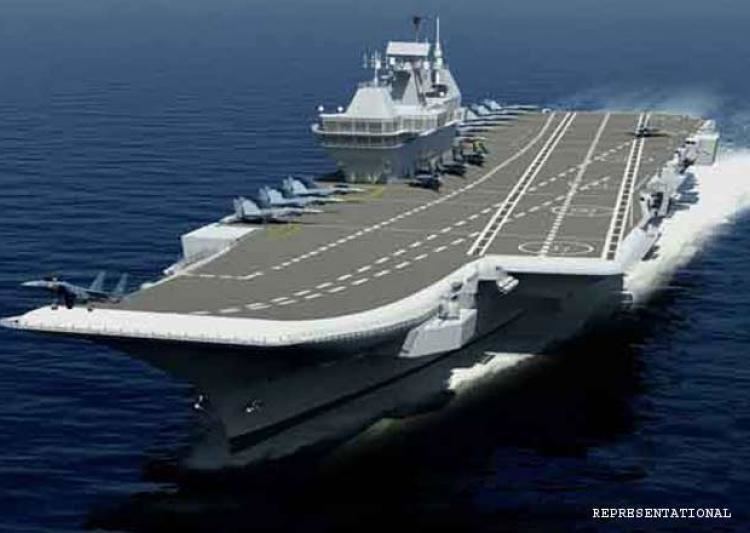
The Indian Navy has reached out to four international defence companies for suggestions with the design of Vishal. The letters of request (LoR) were sent to British firm BAE Systems, French firm DCNS, American firm Lockheed Martin and Russian firm Rosoboronexport on July 15, 2015 , according to a report in Jane’s Navy International. The letter asks the companies to “provide technical and costing proposals” for the IAC-II program.
Carrier air group
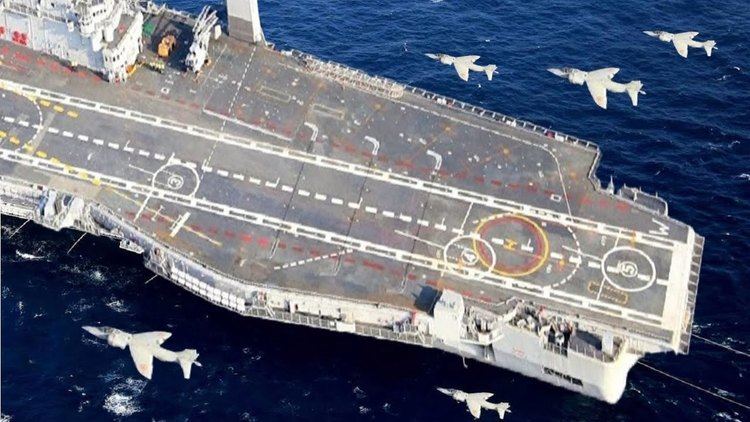
The decision regarding the carrier air battle group still remains unclear because of the lack any official comment regarding the subject but most experts speculate that it may consist of naval variant of Tejas Mk II as well as future 5th generation fighter jets like HAL AMCA and UCAVs like the DRDO AURA that the Indian Navy may choose to develop. The Indian Navy evaluated the Electromagnetic Aircraft Launch System (EMALS), which is being used by the US Navy in their latest Gerald R. Ford-class aircraft carriers. General Atomics, the developer of the EMALS, was cleared by the US government to give a technical demonstration to Indian Navy officers, who were impressed by the new capabilities of the system. The EMALS enables launching varied aircraft including unmanned combat air vehicles (UCAV). On 1 August 2013 Vice Admiral Robin K. Dhowan, while talking about the detailed study underway on the IAC-II project, said that nuclear propulsion was also being considered. This has since been finalized. The carrier was initially expected to enter service by the 2020's but latest reports (as on November 2016) suggests that it will enter service only by 2030 due to the technical challenges involved in assimilating and integrating several advanced technologies for the first time in an Indian carrier. After the renewal of DTTI between India and the United States, it is possible that the EMALS could be produced in India with the assistance from General Atomics.
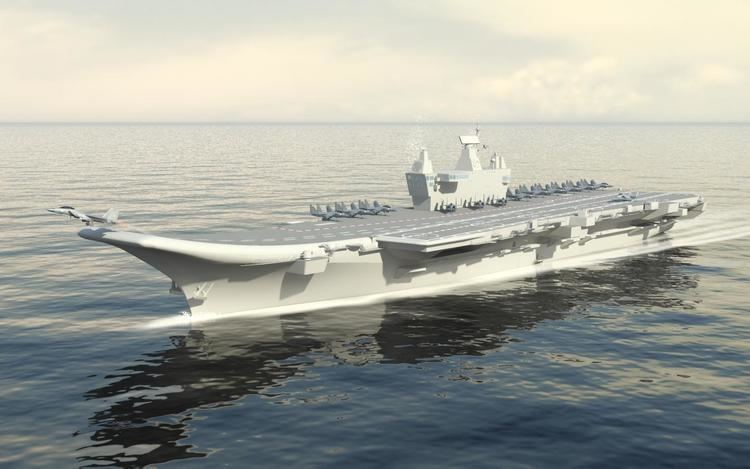
In December 2016, the navy announced that the HAL Tejas is overweight for carrier operations, and alternatives will be explored. In January 2017, an international offer was made for interest in a new carrier borne aircraft.
Naval planners believe that, with INS Vishal likely to enter service in the early 2030s, they should plan on operating UCAVs from that carrier, as well as an AEW aircraft, and medium and light fighters. According to a naval planner, it "could greatly expand our mission envelope with UCAVs, using the pilot-less aircraft for high-risk reconnaissance and SEAD (suppression of enemy air defences). Mid-air refueling would let us keep UCAVs on mission for 24-36 hours continuously, since pilot fatigue would not be a factor."
